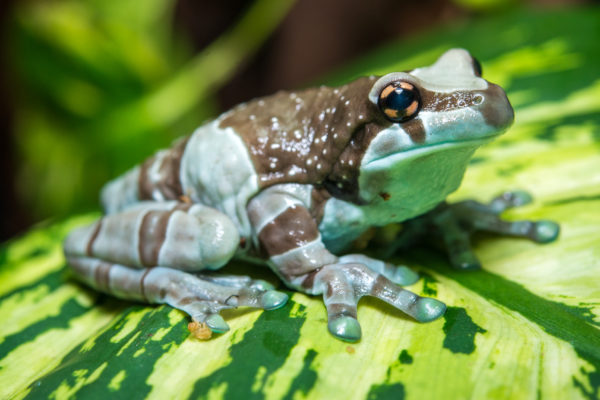The Amazon Milk Frog, scientifically known as Trachycephalus resinifictrix, is a captivating amphibian native to the tropical rainforests of South America. Renowned for its striking appearance and engaging personality, this species has become increasingly popular among both novice and experienced pet owners. This guide aims to provide essential information for beginners to ensure proper care for these unique frogs.
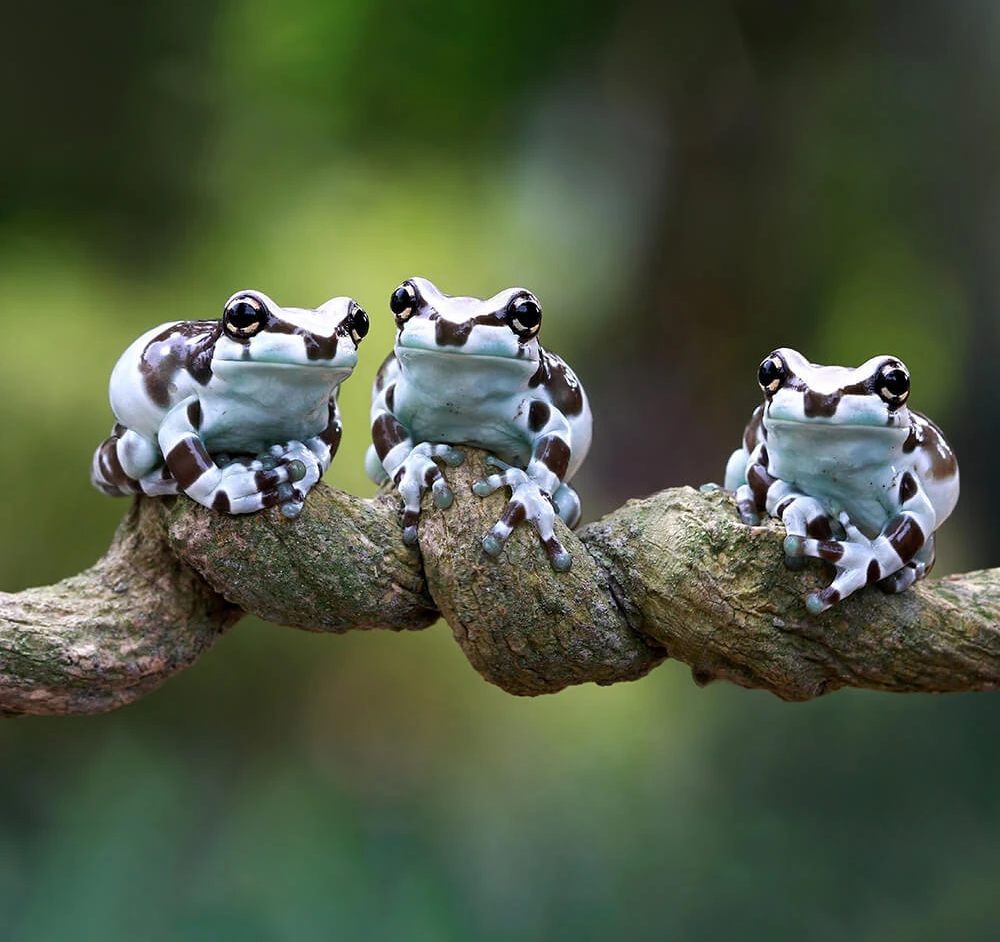
Understanding the Amazon Milk Frog
Description and Physical Characteristics
Amazon Milk Frogs are medium-sized, reaching lengths of about 2.5 to 4 inches. They are characterized by their vibrant bluish-green skin adorned with distinct brown and black patterns, which serve as camouflage in their natural habitat. Their large, golden eyes and sticky toe pads further enhance their unique appearance. These frogs are nocturnal and exhibit a lively demeanor, making them fascinating pets to observe.
Natural Habitat
In the wild, Amazon Milk Frogs thrive in the humid, arboreal environment of the rainforest canopy. They prefer to reside near water-filled tree holes, which are crucial for their reproductive cycle. Their climbing behavior is a notable characteristic, as they often perch on branches and large leaves, utilizing their strong limbs and adhesive toe pads to navigate their surroundings.
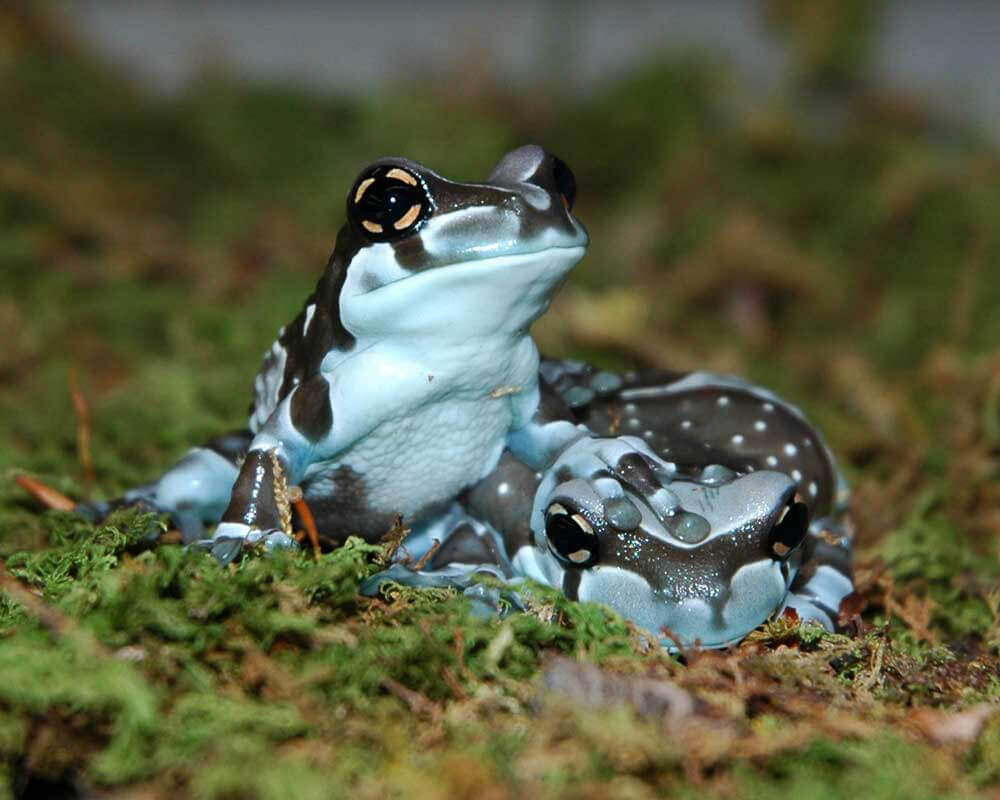
Setting Up the Ideal Habitat
Enclosure Requirements
To create a suitable environment for your Amazon Milk Frog, a terrarium with ample vertical space is essential. An enclosure measuring at least 18”L x 18”W x 24”H is recommended for one or two frogs, though larger is always better to accommodate their climbing needs.
Substrate and Furnishings
A variety of substrates can be used, including moss, coconut fiber, and reptile soil, which help maintain humidity levels. Additionally, incorporating decorations such as branches, cork tubes, and live or artificial plants will provide hiding spots and climbing opportunities, enhancing the frogs’ quality of life.
Temperature and Humidity
Maintaining the appropriate temperature and humidity is crucial for the health of Amazon Milk Frogs. The optimal temperature range is between 72°F to 78°F, with a basking area of 80°F to 85°F. Humidity levels should be kept high, around 60% to 90%. Using tools like thermometers and hygrometers will help monitor these conditions effectively.
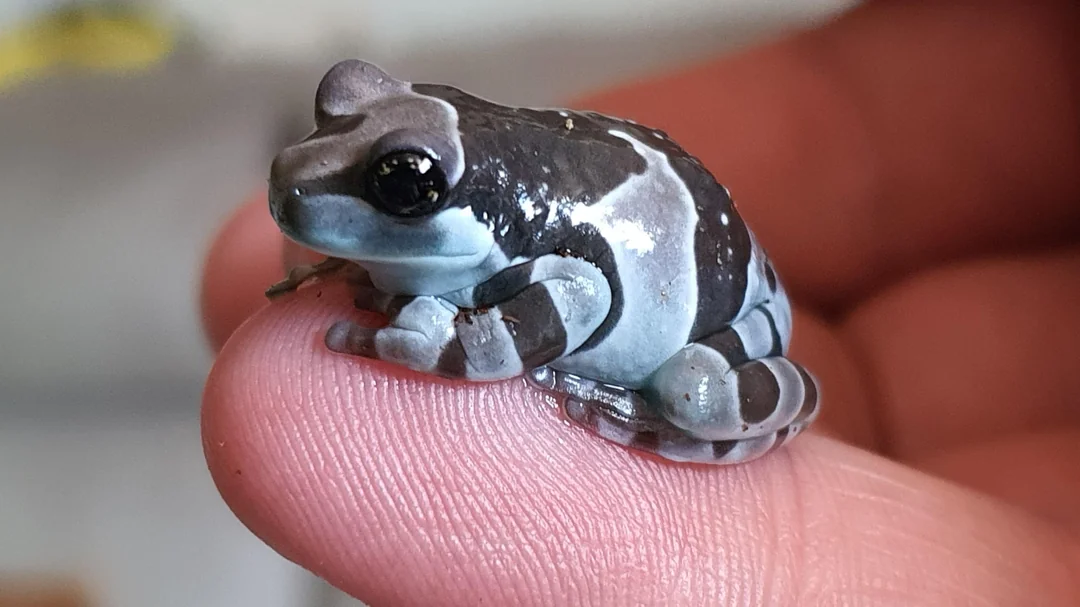
Feeding Your Amazon Milk Frog
Dietary Needs
Amazon Milk Frogs are insectivores, requiring a diet rich in live insects such as crickets, roaches, and worms. Young frogs should be fed daily, while adults can be fed 1-2 times a week to prevent obesity.
Feeding Techniques
When offering food, ensure that the insects are appropriately sized—no wider than the space between the frog’s eyes. Additionally, it is beneficial to dust the insects with calcium and vitamin supplements to ensure a balanced diet.
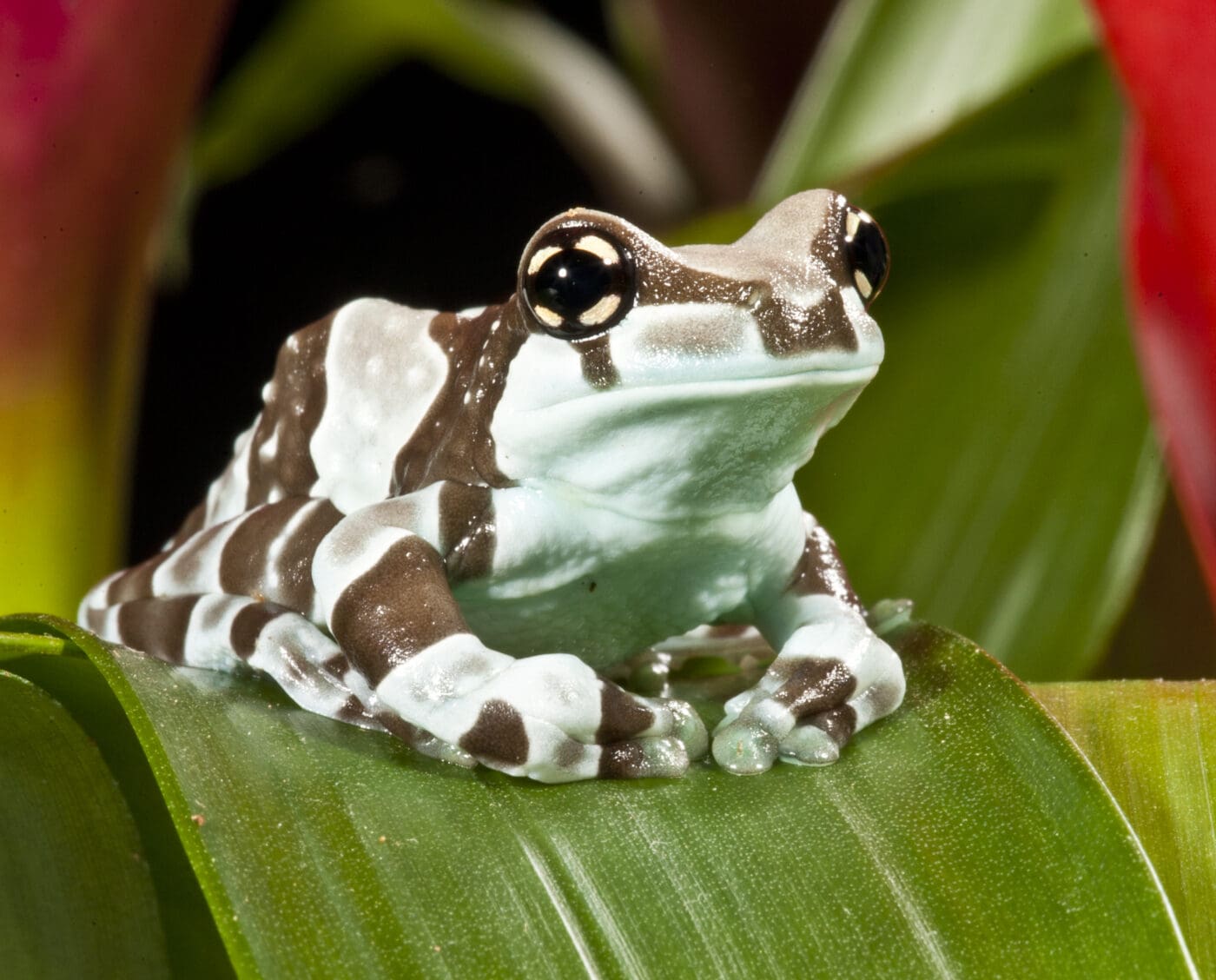
Health and Wellness
Common Health Issues
While Amazon Milk Frogs are generally hardy, they can be susceptible to common health issues such as skin infections or respiratory problems. Symptoms to watch for include lethargy, loss of appetite, or abnormal behavior. Regular veterinary check-ups and maintaining a clean habitat can help prevent these issues.
Regular Maintenance
Cleaning the enclosure regularly is vital for maintaining a healthy environment. This includes removing waste, replacing substrate as needed, and ensuring that the water source is clean and dechlorinated. Handling should be minimal to reduce stress, and when necessary, hands should be wet to avoid harming the frog’s sensitive skin.
Breeding and Reproduction
Overview of Breeding Process
Breeding Amazon Milk Frogs requires specific conditions, including a well-maintained habitat with adequate humidity and temperature. Males will call to attract females, and successful mating can result in the female laying up to 3,000 eggs in water-filled tree holes.
Caring for Tadpoles and Froglets
Once the eggs hatch, the tadpoles will develop in the water until they metamorphose into froglets. Care must be taken to provide a suitable environment for both stages of development, ensuring they have access to clean water and appropriate food.

Additional Tips and Resources
Recommended Products and Tools
Investing in quality products will enhance your frog-keeping experience. Recommended items include:
- Terrariums: Glass tanks that allow for proper ventilation and temperature regulation.
- Substrates: Coconut fiber and moss for humidity control.
- Feeding Equipment: Tools for dusting insects with supplements.
Where to Seek Help
For additional support, consider joining forums, local herpetological societies, or consulting with veterinarians specializing in amphibians. These resources can provide valuable insights and assistance.
Conclusion
Caring for Amazon Milk Frogs can be a rewarding experience for beginners willing to learn and observe their unique behaviors. By understanding their needs and providing a suitable habitat, you can enjoy the companionship of these fascinating creatures for many years to come. Continue to explore and educate yourself about their care to ensure a thriving environment for your Amazon Milk Frogs.

